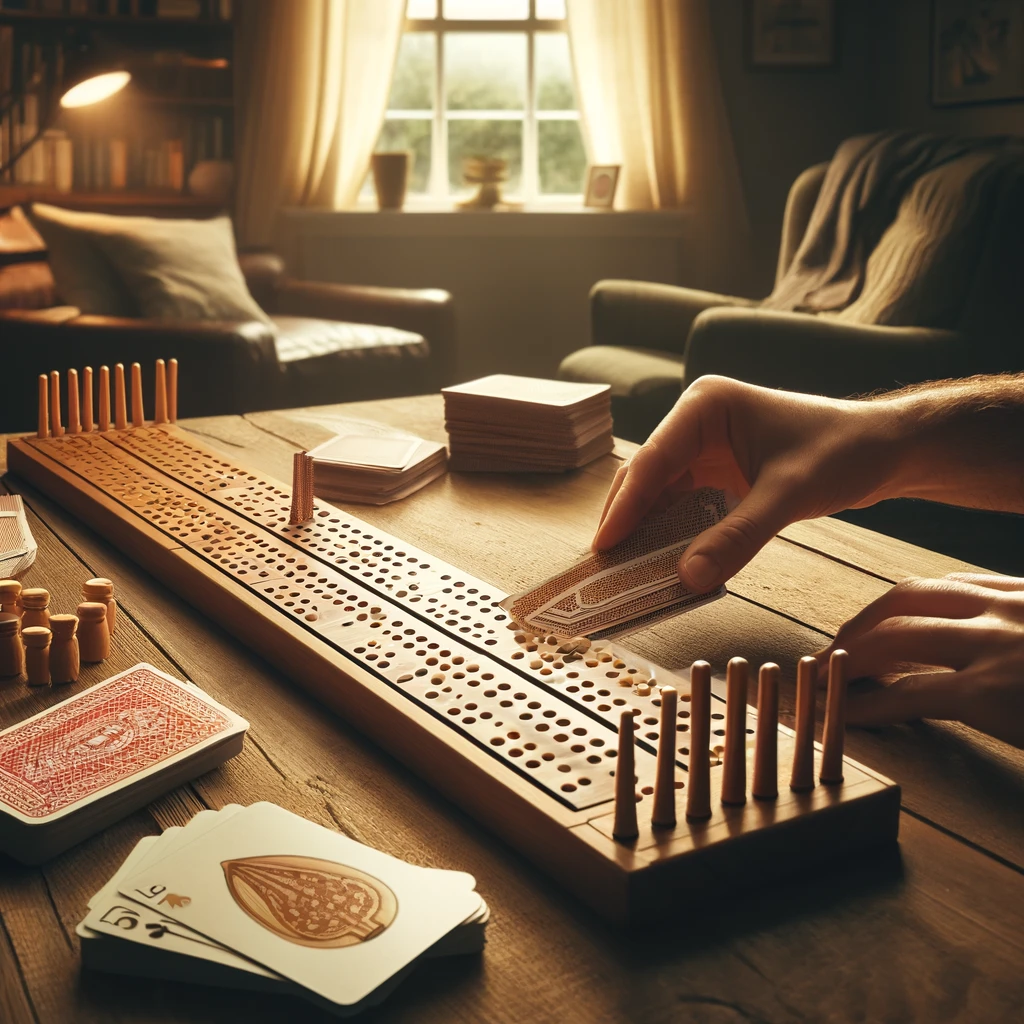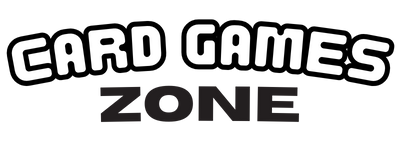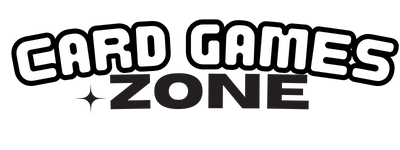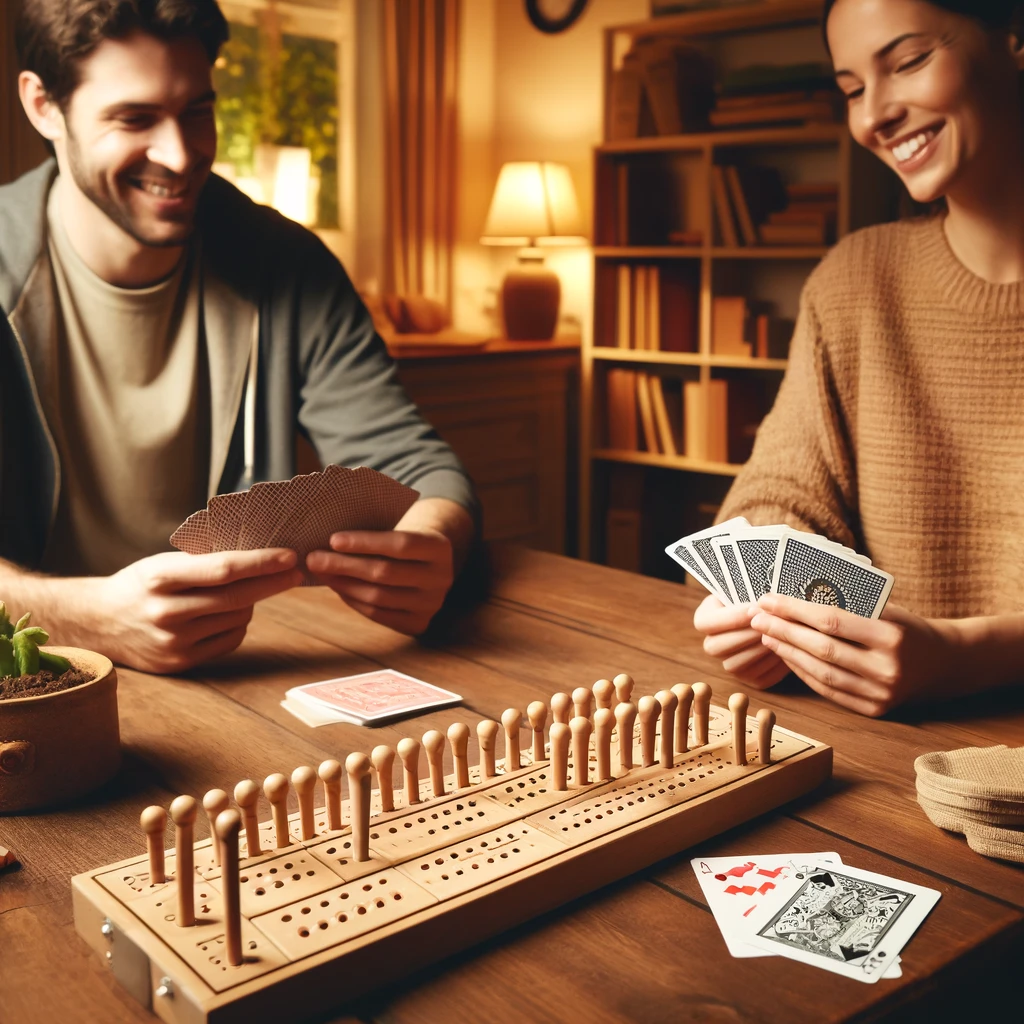Cribbage is a classic card game traditionally played by two players. It involves playing and grouping cards in combinations to gain points, utilizing both a standard 52-card deck and a distinctive cribbage board for scoring. Whether you’re new to the game or looking to brush up on the basics, this guide will take you through the essentials of how to play cribbage, along with some strategic tips to maximize your points and enjoy the game to the fullest.
Try playing Cribbage here:
Object of the Game
The primary goal in cribbage is to be the first player to score 121 points. Points are accrued through various combinations of cards during both the play and the show phases of the game, which are then tracked on the cribbage board.
The Cribbage Board
A standard cribbage board typically features three tracks with 121 holes each, often in different colors. The board also includes three pegs of each color, which are stored in a small compartment at the back. Players use the pegs to keep track of their scores throughout the game, moving them along the holes as points are scored.
Setting Up the Game
Number of Players
Cribbage can be played with two, three, or four players. Here are the guidelines for dealing cards based on the number of players:
- Two players: Each player is dealt six cards.
- Three players: Each player is dealt five cards, and one card is placed face down to form a kitty.
- Four players: Players sit opposite each other in teams, and each player is dealt five cards.
To determine who deals first, each player cuts the deck, and the player with the lowest card becomes the dealer. The deal alternates between players after each hand.

Basic Steps of Gameplay
- Deal the Cards: After dealing, each player discards two cards to form the crib (one card each if playing with three players), which belongs to the dealer.
- Cut the Deck: The non-dealer cuts the deck, and the dealer reveals the top card of the lower half, known as the starter card.
- Playing the Cards: Players take turns playing one card at a time from their hands, trying to achieve a running total of 31 without exceeding it. Points are scored during this phase as follows:
- Reaching 15: Scores 2 points.
- Pair of cards: Scores 2 points.
- Three of a kind: Scores 6 points.
- Run of three or more consecutive cards: Scores points equal to the number of cards in the run.
- Go: Scores 1 point when a player cannot play without exceeding 31, and the opponent can play.
- Reaching 31 exactly: Scores 2 points.
Scoring Hands
Once all cards are played, players score their hands, starting with the non-dealer:
- Combinations of 15: Each combination scores 2 points.
- Pairs: Each pair scores 2 points.
- Three of a kind: Scores 6 points.
- Runs: Scores points equal to the number of cards in the run.
- Flushes: Four or more cards of the same suit in the hand (not in the crib) score 4 points (5 if including the starter card).
The Crib
After scoring individual hands, the dealer scores the crib using the starter card and the four discarded cards. The crib can score points for pairs, runs, combinations of 15, and sometimes flushes (if all five cards including the starter card are the same suit).
Strategic Tips
- Discard Wisely: When discarding to the crib, aim to leave yourself with the highest scoring potential in your hand while also considering the potential for the crib (especially if it’s yours).
- Play High Cards Early: Try to play your higher cards early in the play phase to avoid being left with cards that could exceed 31.
- Watch the Cut Card: The starter card can significantly impact your scoring opportunities, so always consider its value when planning your moves.
Example Playthrough
Let’s say you have the following hand: 6♥, 5♠, 4♣, 9♦, J♠, and Q♥. You might discard the 9♦ and Q♥ to the crib, leaving you with 6♥, 5♠, 4♣, and J♠. During the play phase:
- If you play 6♥ and your opponent plays 7♦, bringing the total to 13.
- You then play 5♠, bringing the total to 18, and your opponent plays another 7, bringing it to 25.
- You play 4♣, making it 29. Your opponent cannot play without exceeding 31, so you score 1 point for a “go.”
In the counting phase, you could then score your hand:
- 15 (6♥, 5♠, 4♣) for 2 points.
- Another 15 (6♥, 5♠, 4♣, and J♠) for another 2 points.
- A run of three (6♥, 5♠, 4♣) for 3 points.
Conclusion
Cribbage is a game that blends luck and skill, making it a favorite for card enthusiasts for centuries. By understanding the basics and employing strategic discarding and play, you can maximize your scoring opportunities and enjoy countless hours of engaging gameplay.
For more detailed strategies and advanced tips, you can explore additional resources such as Bicycle Cards’ guide on cribbage or Cribbage Online.
Or check out this How-to Video below:





